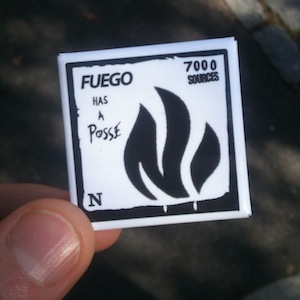Back in 2018, the far-right influencer Steve Bannon shared his theory of American politics. “The Democrats don’t matter,” he told journalist Michael Lewis. “The real opposition is the media. And the way to deal with them is to flood the zone with shit.”
It’s not hard to see the Bannon strategy at work at Elon Musk’s Twitter. Each day brings a new fistful of outrages. Just from the past few: Twitter starts promoting Vladimir Putin’s tweets. Twitter blocks tweets critical of the Indian government — not just in India, but worldwide. Twitter stops putting labels on Chinese propaganda — but starts adding labels to the BBC. Twitter starts a dumb feud with Substack, throttling tweets to Substack articles, telling users they’re “unsafe,” and redirecting searches for “substack” to “newsletter.” And oh yeah, Elon’s inner child is rebranding “Twitter” as “Titter.”
But I wanted to get one more Musk-driven obituary on the record. Twitter’s API restrictions have killed off Fuego, a little side project we’ve been running here at Nieman Lab since 2011. Here’s how I described it at the time:
Fuego is all about right now — what people in our field are talking about at this very instant. Every hour, Fuego searches through thousands of Twitter accounts related to the future of news, sees what links people are sharing and talking about, does a little math to favor fresh stories, and spits out the 10 links that are getting the most attention, with sample tweets for each. It’s like spending your day reading Twitter — but without having to actually spend your day reading Twitter.
In other words, it was a lot like Nuzzel, which launched the following year and which, after being acquired by Twitter in 2021, lives on as Twitter Blue’s Top Articles. (Fuego in turn took its inspiration from an earlier experiment called Hourly Press by Lyn Headley and Steve Farrell.) Credit for its construction goes 98% to our old friend Andrew Phelps and 2% to me fiddling with fonts. We open-sourced it in 2013 so you could build your own Fuegos, focused on any topic you chose.
Fuego was an early example of the sort of thing the Twitter API enabled: an alternate interface for your network. If you read every single tweet posted by a group of digital-media-savvy people — for an hour, a day, or a week — what are the links you’d see most often? And what are people saying about them? The old rules let us do it for free; now, Musk wants to charge us $42,000 a month. We will, unsurprisingly, not be paying. And with that, Fuego joins the tens of thousands (likely hundreds of thousands!) of projects killed by Musk.
Civilization will somehow survive the loss of Fuego, I imagine. But its death is yet another sticky-note-on-the-bathroom-mirror reminder that you can no longer depend on Twitter for anything. Building something there is like building on sand — and you never know when the next wave will come rolling in.



